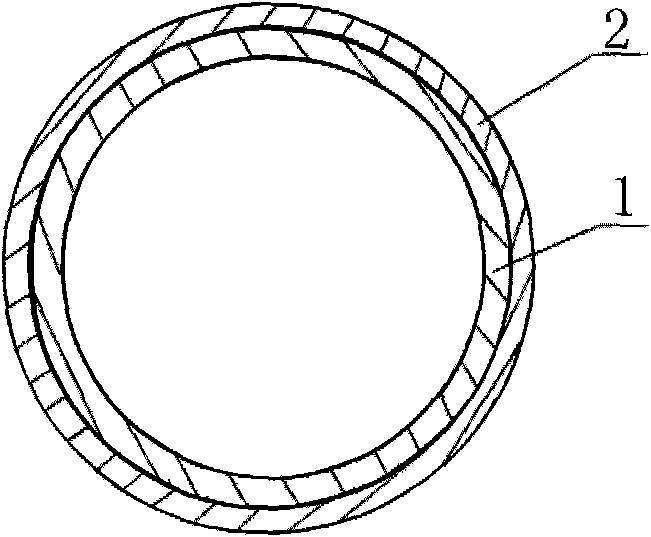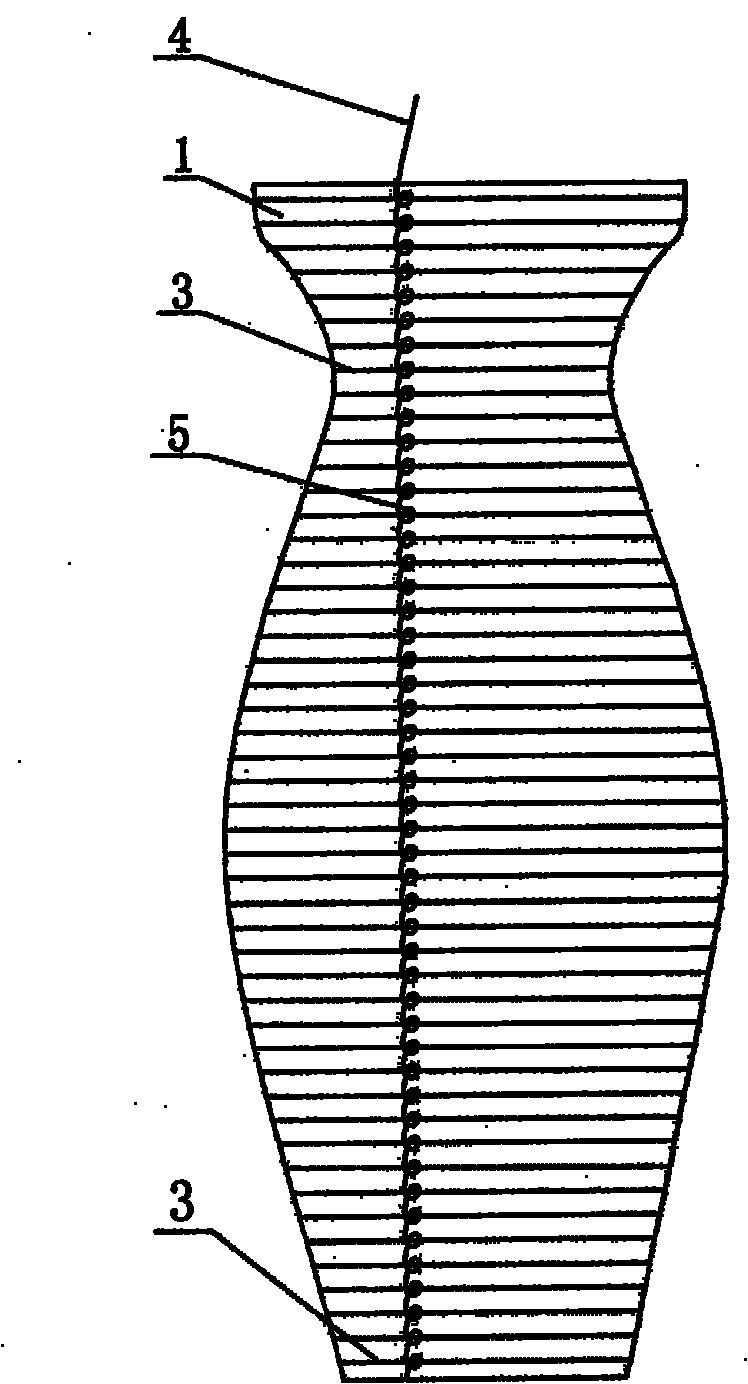Three-dimensional silk tapestry product and weft weaving process thereof
A product, three-dimensional technology, applied in the field of three-dimensional Kesi products, can solve problems such as difficult Kesi, inability to fully play the role of artwork decoration, inconvenient placement and storage, etc., and achieve the effect of prolonging life
- Summary
- Abstract
- Description
- Claims
- Application Information
AI Technical Summary
Problems solved by technology
Method used
Image
Examples
Embodiment 1
[0033] Such as figure 1 and figure 2 Shown, a kind of three-dimensional Kesi product (brocade porcelain), its structure is, on the outer surface of porcelain 1 there is a layer of Kesi layer 2.
[0034] The tapestry layer used in this embodiment is a full tapestry layer.
[0035] The tapestry making technique of above-mentioned three-dimensional silk tapestry product (brocade porcelain) comprises the following steps:
[0036] 1) Sampling: Customized porcelain. Due to the use of the whole tapestry layer, when ordering porcelain, it is required to only glaze the inside and leave all the outside blank;
[0037] 2) Loading the sample: draw the artwork on the blank space of the porcelain 1;
[0038] 3) Upper weft: Since the surface of the porcelain is circular, in order to avoid the accumulation and slipping of the wrapped weft, it is necessary to set at least three fixed points for each winding of the weft. Such as image 3 As shown, a circle of weft thread 3 is first wound...
PUM
 Login to View More
Login to View More Abstract
Description
Claims
Application Information
 Login to View More
Login to View More - R&D
- Intellectual Property
- Life Sciences
- Materials
- Tech Scout
- Unparalleled Data Quality
- Higher Quality Content
- 60% Fewer Hallucinations
Browse by: Latest US Patents, China's latest patents, Technical Efficacy Thesaurus, Application Domain, Technology Topic, Popular Technical Reports.
© 2025 PatSnap. All rights reserved.Legal|Privacy policy|Modern Slavery Act Transparency Statement|Sitemap|About US| Contact US: help@patsnap.com



